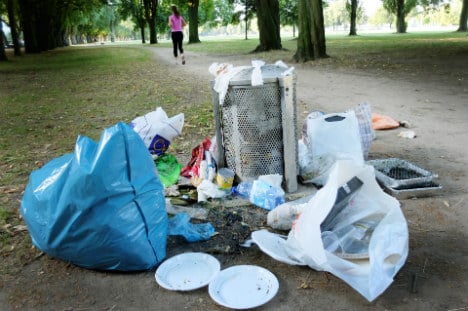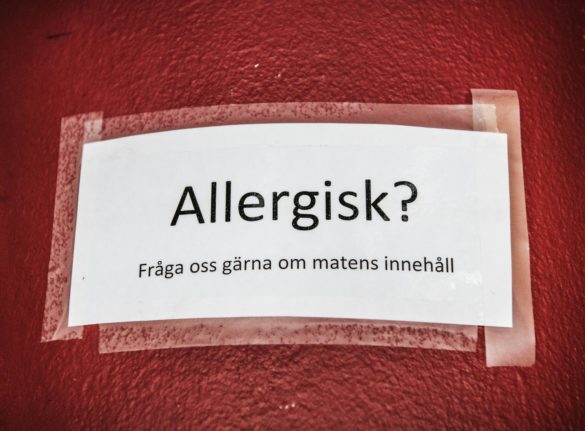It's a familiar sight in green spaces all over the Federal Republic: the morning after a particularly golden summer's evening, the grass is strewn with abandoned disposable barbecue trays, plastic cups and chicken bones.
Now town councils want to take on private security companies or even students to patrol their best-loved grilling spots and prod people into clearing up after themselves.
“We've noticed that it isn't enough to put out signs,” said Gerhard Bomhoff of the Werdersee Verein, which takes care of the lake of the same name near Bremen.
People enjoying the lake in the summer had been ignoring the barbecue area created by city authorities – so now four students have been hired to patrol the shore and give out information flyers and rubbish bags.
Meanwhile in Munich, 22 private security guards are now on patrol along the banks of the Isar river.
 Rubbish piled around overflowing bins is a familiar sight in parks across Germany in summer. Photo: DPA
Rubbish piled around overflowing bins is a familiar sight in parks across Germany in summer. Photo: DPA
While they formerly only patrolled in the sunshine, they are now also deployed on rainy days as some die-hards were grilling under the city's bridges.
Munich faced a 150-tonne mountain of barbecue-related rubbish over summer 2015 – which cost the Bavarian capital some €5,000 per week to clean up.
Carrot or stick?
While the private security and students taken on in some cities can't hand out fines, other towns have ordered their police forces onto the case.
In Frankfurt, for example, police can slap messy party people with a €50 on-the-spot fine, as well as a bill for the cleanup.
Berlin has gone the other way, betting on providing large containers at popular barbecue spots like Mauerpark and the former airport at Tempelhof where people can get rid of their rubbish just metres away from designated grilling areas.
Many cities have also banned disposable barbecues and camp fires, as they leave unsightly burn marks on the grass.
But enterprising city politicians in Cologne and Düsseldorf have suggested a way to turn the barbecue problem into a money-making wheeze: installing electric grills at popular barbecue places that can be activated via a coin slot.



 Please whitelist us to continue reading.
Please whitelist us to continue reading.
Member comments